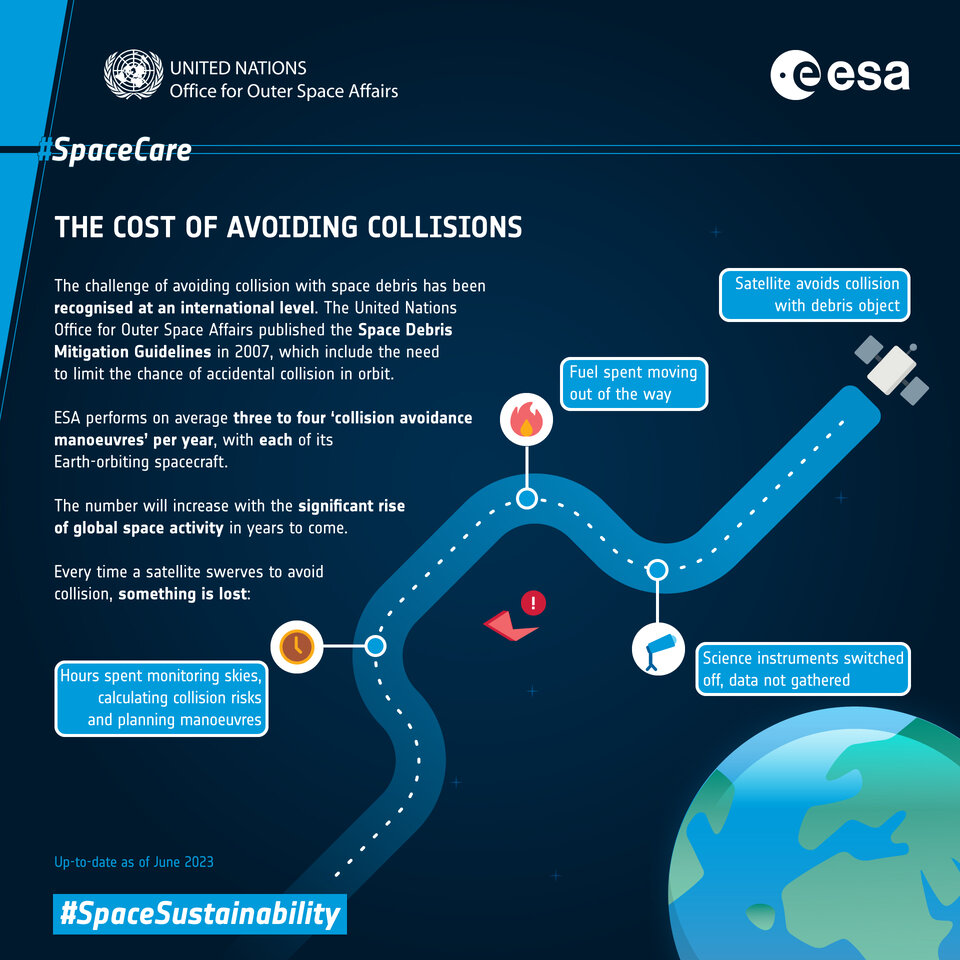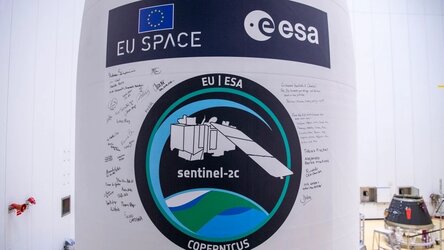Sentinel-2C operators complete final rehearsals
ESA mission controllers have completed the final phase of their simulation training for the critical launch and early orbit phase, confirming that everything is ready for the launch of Sentinel-2C.
A quiet atmosphere pervades ESOC's Main Control Room. The operations team is in the process of placing a satellite into orbit. We are one minute away from passing over one ground station and the tension is rising as we eagerly wait to receive the first telemetry from the satellite.
Then, suddenly, an alarm is triggered, the light changes colour and crackling sounds can be heard. A fire has broken out in the room. The evacuation is ordered. The control room must be abandoned, and the satellite operations relocated to an adjoining room.
This was just a simulation of what could happen during a satellite's first and most critical moments in space. To ensure a smooth start to operations, the control team must consider every possible scenario, whether it happens in space or on the ground – such as a fire alarm.

This summer, as the launch of the Copernicus Sentinel-2C satellite approaches, the control team located at ESOC, ESA’s operations centre in Germany, has been performing a crucial phase of the launch preparation, reviewing and revising the satellite's and ground segment's plans and procedures to guarantee the success of the mission.
This ‘team of teams’ effort involved over 40 engineers and scientists - working on the ground segment, flight dynamics, software and networks - all ready to assume control of the satellite following lift off.
After weeks and weeks of simulations, the team has completed this phase and is now fully prepared for the launch and deployment of the European Commission’s latest Earth observation mission, to be lifted into orbit by a Vega rocket from Europe’s Spaceport in Kourou, French Guiana on 4 September at 03:50 CEST.

“This is not the first Sentinel mission we operate here at ESOC. Our experience has helped us standardise our approach so that we are able to test ourselves on the widest range of anomalies while still facing the most challenging situations,” says Franco Marchese, Flight Operations Director for Sentinel-2C.
“One of our main challenges has been the knowledge transfer to the partially new team, as the previous models of Sentinel-2 was launched more than seven years ago," says Pete Collins, Deputy Flight Operations Director for Sentinel-2C.
“Our team has been flying Sentinel satellites and performing routine operations, including the A and B models of Sentinel-2, but putting a spacecraft into orbit is always a complex phase with its own unique challenges. We have prepared very well and have achieved this in a relatively short time.”
“Like throwing monsters at the operators”
From a room in the basement, the true conductors of the simulation campaign, the simulation officers lead by aerospace engineer Gustavo Bardo Carvalho, are running the show and they always have more than one string to their bow.
“The role of this exercise is to test the team’s capabilities to detect problems, adapt their timeline and, more generally, adapt to the scenario under stress and time pressure,” explains Gustavo. “It feels like setting up a role-playing game. We confront the team with 'monsters' – in this case, anomalies of minor or major magnitude – and let them come up with solutions, think outside the box, have creative ideas, and learn from their mistakes.”


Access the video
From the simulations room, where flight data is simulated and fed to the control room, Gustavo and his team have been challenging the Sentinel-2C control team with an exhaustive list of issues to solve, from errors injected in the data, to the loss of ground stations, absence of team members (simulated sickness), and instrument and transmission failures.
Some are common and anticipated, others require the mission control team to brainstorm and exercise the communication between many multidisciplinary teams, such as the flight control team, industry partners, flight dynamics, the ESA space debris office, mission control system software and the ground stations.

“We made sure to not necessarily give a clear solution. Just like in real life, sometimes the best response is just to try to avoid the worst consequences, and we always remind them that reality can be much nastier than any simulation we may invent.”
Some exceptional scenarios were also included to force the team to adapt without their usual equipment and deviate totally from the nominal timeline such as space debris hazards, disruptions resulting from the solar wind or the evacuation of the control room.

“Recently, we simulated a space debris collision alert which required the team to make the satellite ready to engage in a collision avoidance manoeuvre. This meant skipping the usual steps and commissioning the satellite as early as possible.”
On top of testing their technical knowledge, the simulation campaign plays a role in building the team.
“There are many events that can harm the team spirit: from people being sick to managers being rude or non-cooperative. We tried to simulate these moments to test the nerves of the team and make them more resilient.”
Dress rehearsal

Lastly, teams at ESOC worked with the joint ESA, Arianespace and industry launch team in Kourou to complete the comprehensive final simulation of the countdown and launch sequence.
During the rehearsal, the mission control team received live signals from the satellite via an umbilical connection that will be disconnected shortly before launch. With this last step completed, the mission control team is now ready to launch the satellite.














 Germany
Germany
 Austria
Austria
 Belgium
Belgium
 Denmark
Denmark
 Spain
Spain
 Estonia
Estonia
 Finland
Finland
 France
France
 Greece
Greece
 Hungary
Hungary
 Ireland
Ireland
 Italy
Italy
 Luxembourg
Luxembourg
 Norway
Norway
 The Netherlands
The Netherlands
 Poland
Poland
 Portugal
Portugal
 Czechia
Czechia
 Romania
Romania
 United Kingdom
United Kingdom
 Slovenia
Slovenia
 Sweden
Sweden
 Switzerland
Switzerland
































